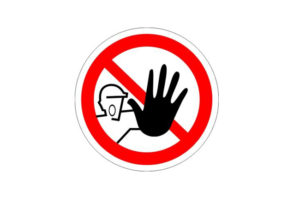Angela White: What schools can do to prevent bullying
It wasn”™t soon after a 15-year-old student arrived at Rising Ground”™s Biondi Middle and High School on the Leake & Watts campus in Yonkers that educators learned that he was bullied incessantly at his former school.
 What was particularly traumatic for the teenage boy was that staff at the former school actually witnessed this and did nothing. He became withdrawn, depressed and tried to avoid attending school.
What was particularly traumatic for the teenage boy was that staff at the former school actually witnessed this and did nothing. He became withdrawn, depressed and tried to avoid attending school.
At Rising Ground”™s Biondi Education Center, we work with students with emotional, behavioral, and intellectual challenges ”” characteristics that historically increase their chances of being targeted. Our goal is to have a bully-free campus.
As a result of our efforts, we”™ve seen a sharp decline in incidents of bullying. But, like most schools in this country, these struggles for our students and teachers are constant. Bullying has become a crisis in America and is one of the underlying factors in so many tragic events, such as school shootings facing our communities across the country.
Victims of bullying are called names, made fun of, have been the subject of rumors, or physically assaulted, threatened or spat on, among any number of other forms of intimidation and embarrassment ”” either in person or online (known as cyberbullying).
Children who have developmental, emotional and learning disabilities, emotional disorders or who identify as LGBTQ (or are perceived to be) are at even greater risk.
For far too many children and teenagers in this country, bullying often leads to anxiety, depression, poor academic performance, ill health and far more serious consequences such as violence against others or even suicide.
According to the National Center for Education Statistics, 20.8 percent of all students report being bullied. Among high school students, 15.5 percent are cyberbullied and 20.2 percent are bullied on school property; 74.1 percent of LGBTQ students are bullied because of their orientation or gender expression.
Students who are bullied or bully others are more likely to report high levels of suicide-related behavior. So, creating a safe environment is necessary for any child to succeed, and it starts with giving students a voice. Regardless of the scenario, those who have been threatened, often end up bullying others. It”™s a vicious cycle.
At the Biondi Middle and High School we are employing a multifaceted approach to disrupt that cycle and address the challenges head on. It includes:
Ӣ Acting immediately: When a matter is reported, we deal with it swiftly by involving the students, teachers, trained professionals and parents. Too often, parents arenӪt even aware of their childӪs aggressive behavior.
Ӣ Bringing students together: In forming a student-led Bullying Prevention Committee, peers convene with trauma-informed counselors and teachers in a group setting on a weekly basis. They share their thoughts, express their feelings and learn to empathize with each other and then model the behavior to other students.
Ӣ Spirit Week: We organize activities focused on bully prevention and intervention and provide students with information, support and means of coping, preventing and reporting incidents.
Ӣ Acts of Kindness: We encourage students to focus on simple gestures, such as saying hello, thank you and offering praise to their peers. Basic acts of kindness go a long way in preventing disrespectful behavior.
Ӣ The Box: Students are encouraged to put a note in a box where staff addresses their concerns immediately.
”¢ The Inspiration Tree: Kids leave encouraging messages on an artistic tree such as “Be a buddy, not a bully,” “Be kind, it”™s free,” and “Together we can make a difference.” It a simple reminder for all to see.
Ӣ Rewards system: Students are recognized for their good deeds and rewarded in points that can be used to gain privileges and make purchases in the school store.
In all of our approaches, we work closely with teachers, licensed psychologists, social workers, crisis intervention therapists, parents, and students — and focus on building student strengths, encouraging positive behaviors.
Evidence shows that when schools have prevention programs in place, instances of bullying go down by as much as 25 percent. Even more eye opening is when a peer intervenes on behalf of the victim, nearly 60 percent of incidents cease almost immediately, according to figures collected by PACER”™s National Bullying Prevention Center.
Angela White is superintendent of schools for Rising Ground and the elementary, middle and high schools at the Carol and Frank Biondi Education Center in Yonkers.